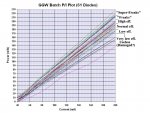- Joined
- May 14, 2008
- Messages
- 468
- Points
- 0
Thank you for your pictures Igor, I like them a lot!:yh:
The first "IgorT" lazor exceeding 400mW, in a Romisen host! I think that all members know in what kind of continuous "rush" you work all the day, every day. When I'll receive this gorgeous 418mW (I can't wait :drool , I'll try to add some more pictures....
, I'll try to add some more pictures....
The first "IgorT" lazor exceeding 400mW, in a Romisen host! I think that all members know in what kind of continuous "rush" you work all the day, every day. When I'll receive this gorgeous 418mW (I can't wait :drool






